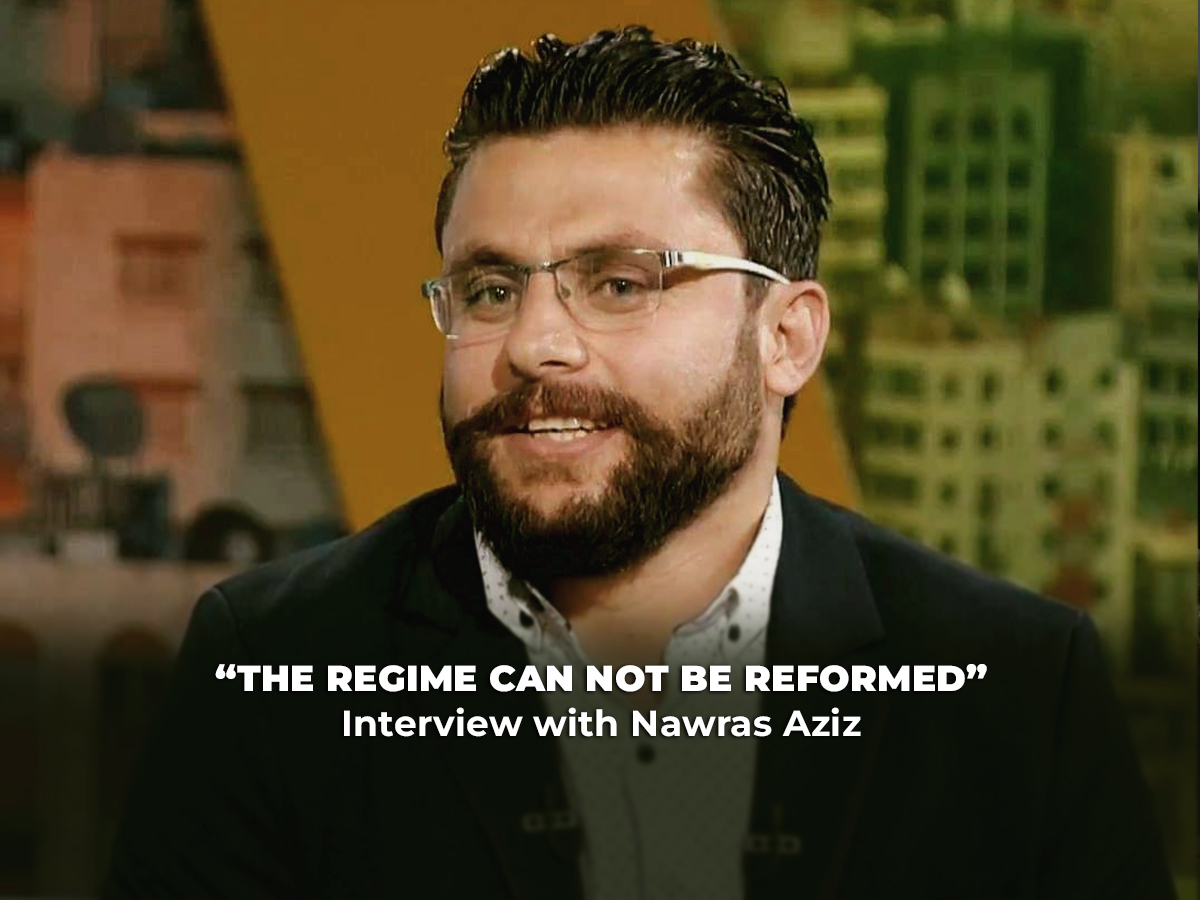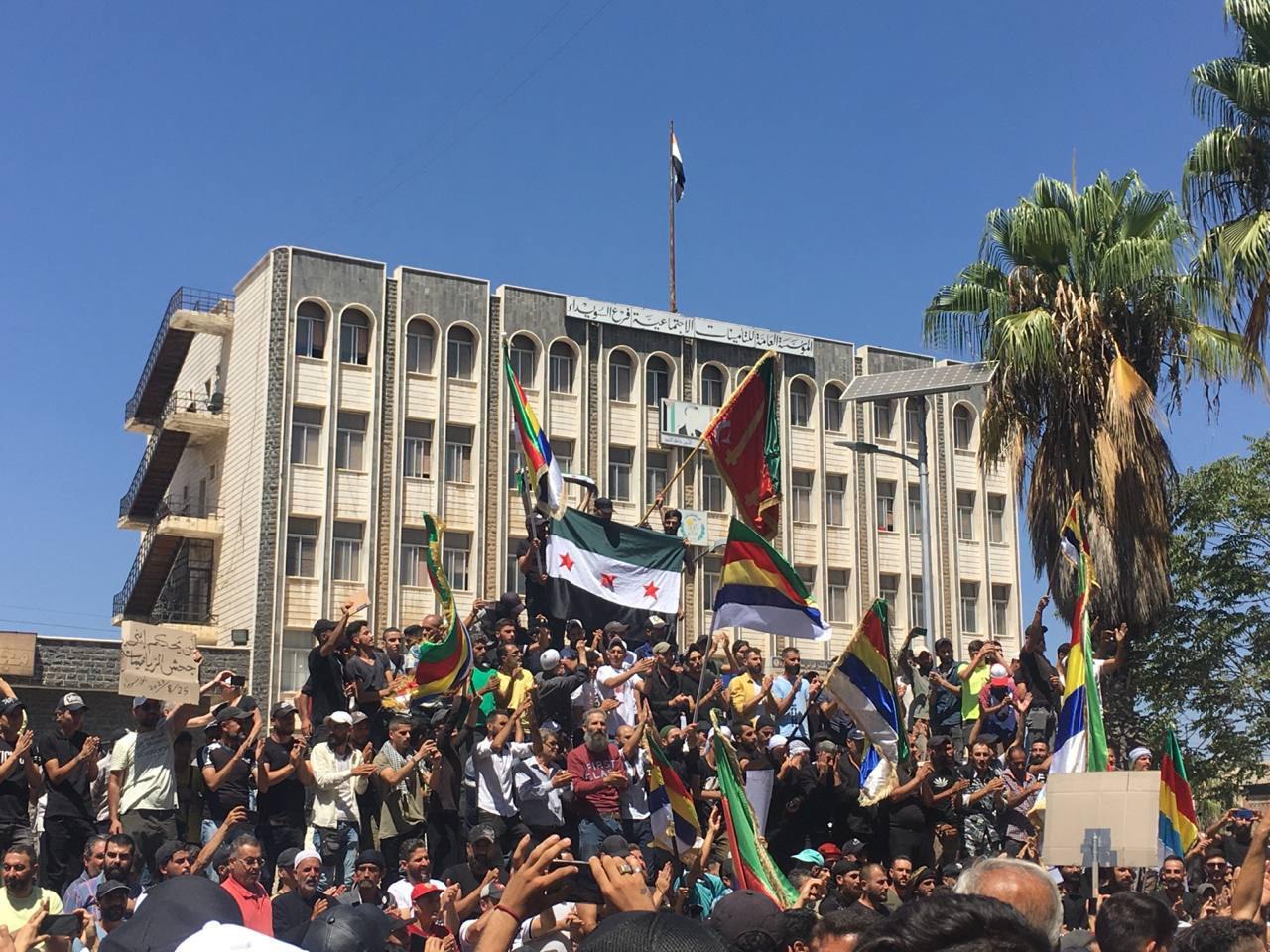
The province of Suwayda, home to a significant portion of the Druze community, has recently seen a surge in protests against the Assad regime. To shed light on the situation, L24 speaks with Nawras Aziz, a Syrian journalist from Suwayda now residing in France. In this interview, Aziz delves deep into the history of Suwayda, the evolution of its people’s experiences over the past 12 years, and the reasons behind the recent uprisings.
L24: What prompted the residents of Suwayda to start protesting, and what are their main demands?
Nawras Aziz: What prompted the residents of Suwayda to demonstrate are indirect cumulative reasons over time, and the direct reason today is the economic situation. The economic situation is just part of the real reasons that pushed the people of Suwayda to rise, revolt, go to the squares, and practice all available types of expression of rejection. First, the economic situation, also the security chaos, and we must not forget that the basis of these protests is that the regime tried to tear apart the civil society in Suwayda, distort its customs, and tarnish its image in front of the Syrians. The other real reason is the appearance of Bashar al-Assad on Sky News Arabia in his bankrupt form without any project or anything, and the subsequent decisions to raise prices and so on. The expatriates have become restless due to the increased burdens on them. They have taken on the role of the state in providing support. In addition to this, there’s the issue of the lost political freedoms. Therefore, we don’t have just one reason, but a set of direct and indirect reasons.
L24: Can you provide a brief overview of the history of Suwayda and its Druze community for those unfamiliar with the region?
Suwayda was first inhabited in 1723 when groups of Druze from Lebanon arrived, following the wars between the Druze and the Maronites there. A group of Druze left Lebanon, and migrations continued throughout the 18th century. Some also came from Aleppo, Idlib, and northern Syria and settled in Suwayda. Before the arrival of the Druze, Suwayda was a site of ancient Roman ruins where some Bedouin tribes would settle in the spring for grazing and then return to the Hauran plain because the mountainous nature is harsh. It is located in southern Syria on the Jordanian border, and its administrative area, including the desert, is more than seven thousand square kilometers. The social composition of Suwayda is mostly of the Druze sect, with some Bedouin tribes from the province and a portion of Christians. The population increased over the years. In 1925, the population was recorded as 55,000, and it was then called the State of Jabal al-Druze after its formation by the French occupation. 9,000 of these residents were Sunnis and Christians.
L24: How has the experience of the people in Suwayda evolved over the past 12 years, from the beginning of the revolution until today?
Nawras Aziz: The truth is that people have learned a lot from the mistakes made since the start of the Syrian revolution. It should be noted that there was a significant portion of opponents in Suwayda from the leftists during the rule of the father and later during the rule of the son. In 2005, some clear cells of opposition activity in Suwayda emerged, coinciding with the Damascus Declaration and other matters. People engaged in these demonstrations in various forms, including a sit-in by the Lawyers’ Syndicate on March 27, 2011, as the first syndicate sit-in in Syria shortly after the start of the revolution. The protesters then chanted for the children of Daraa, demanding the release of detainees after the security intervention there. They also called for the implementation of laws, the removal of the state of emergency, and other demands. Later, Suwayda participated in the demonstrations, where about 300 protest points were recorded in 2011 and 2012 and until early 2013. Some large demonstrations were suppressed by the regime, and local militias were formed at the beginning of the revolution from prisoners who were armed. These later became the core of gangs that operated for many years in Suwayda. From 2013 and 2014, Suwayda realized that the revolution had deviated from its course, became politicized, and was hijacked by some parties, which produced extremist models that appeared in a single form and character. Here, Suwayda relied on participating in their protest form and opposition to the regime by preventing their sons from serving in the army. This depended on the presence of a supporting force on the ground, represented by the Men of Dignity movement, which was formed from a local civilian group based on the customs and traditions of the mountain. Its mission was to preserve the land and honor, and these were its slogans. It managed to prevent the sons of Suwayda from joining the army and prevented the arrest of political wanted persons. This situation still exists today, and it now protects, in collaboration with some local factions, the demonstrators from attacks or security harassment. The Men of Dignity and local factions have always declared their readiness to respond to anything against the people of Suwayda. In conclusion, they benefited from the lessons of the revolution by avoiding mistakes and focusing on the inclusive Syrian discourse and not allowing this movement to be politicized or deviate from the principles of 2011.
L24: In recent years, it seems that the community has become more active in confronting oppression, crime, and asserting their rights. What led to this change?
Nawras Aziz: I reiterate the uniqueness of this civil society in Suwayda. This society is built on customs, traditions, and good qualities. A term used there is “Manaqibiyat Ahl al-Suwayda”, which means virtuous and distinctive matters like bravery, generosity, and other qualities that characterize the people of the region. These qualities led to many civil cases. When the regime supported the gangs, Suwayda faced a significant moral issue, such as the spread of drugs and the spread of kidnapping and ransom cases. It turned against these gangs, as we saw during the past period in Shahba, where drug gangs were expelled from the city. Later, there was a revolt against the main hand and arm of Iran in the south, represented by the Falhout group, and it was eliminated. Suwayda today is in a state of awareness. We must not forget the presence of social media and the presence of a large number of intellectuals inside and outside, constant dialogues, and the ability to understand and accept the other. All these factors made the community more active in confronting oppression and crime.
L24: We’ve noticed banners, signs, graffiti, and chants from the local residents demanding the removal or resignation of Bashar al-Assad. Is the situation with the regime irreparable, and why is the focus on him rather than other members of the regime?

Nawras Aziz: Chants are for the downfall of the regime, and at its forefront, Bashar al-Assad, and not just the regime. As we know, the symbol of the regime is Assad, and the streets of Suwayda know very well that the fall of Bashar al-Assad will lead to the complete disappearance of the ruling elite and the corrupt gang, as the people of Suwayda call them…
L24: To what extent do you think it’s possible to amicably resolve issues with Assad and his regime?
Nawras Aziz: Certainly, the situation cannot be reformed with the regime under any circumstances because this regime is deceitful. This is the opinion of the majority of the streets in Suwayda. It has been tested over 12 years, and all it did was kill people and displace them. We have more than 10 million dead, displaced, and refugees in neighboring countries and Western countries… So, undoubtedly, the regime cannot be reformed.
L24: Are there concerns that the regime or its allies, such as Russia, Iran, and militias like the Shabiha, might violently respond to peaceful protests and acts of civil disobedience?
Nawras Aziz: The option of a military response to this disobedience is not ruled out, but in my view, until today, the regime has not made any move. It seems that there is either a tendency to wait until people get tired and return to their homes, or there might be an international agreement to establish a buffer zone in the south with Suwayda at its center. The third option is that the regime is waiting for the right conditions for military intervention, but it also knows that there are local factions that protect this movement and have a lot of weapons. Therefore, I believe all possibilities are open.
L24: Recently, strong statements have come from Druze leaders and religious authorities, and some even participated in the protests. How important is their participation?
Nawras Aziz: When the Druze community agrees on an opinion or a particular issue, it is very difficult for them to go back on it until it’s achieved. This has been historically known about the Druze. Today, their participation in the revolutionary movement in the streets greatly motivates the hesitant and fearful people. The religious symbolism has always been the primary reference for the Druze sect. Today, when they see their sheikhs calling for demonstrations and blessing the movement, no village will remain inactive. That’s why today we record about 44 protest points in Suwayda. Today, the presence of religious authority and protection for this movement will be a safeguard for it.
L24: Druze communities outside of Suwayda, especially in Lebanon, have expressed strong support and made sharp statements about Assad and his regime. Is there an impression that the Druze are being targeted by the regime, or are these expressions merely signs of solidarity?
Nawras Aziz: The Druze community currently does not believe that this movement is for a Druze society, and this is entirely negated. It is clear in the protests that banners call for the unity of the Syrian rank, and there is no banner indicating that this movement is Druze. What proved this is the joining of more than 200 young men from Bedouin tribes from different areas in Suwayda. They came as a large delegation and participated with the protesters in the square, raising slogans like “The Syrian people are one” and “No to sectarianism.” Therefore, this movement is distinctly Syrian. The target today is not the Druze but the Syrian people.









